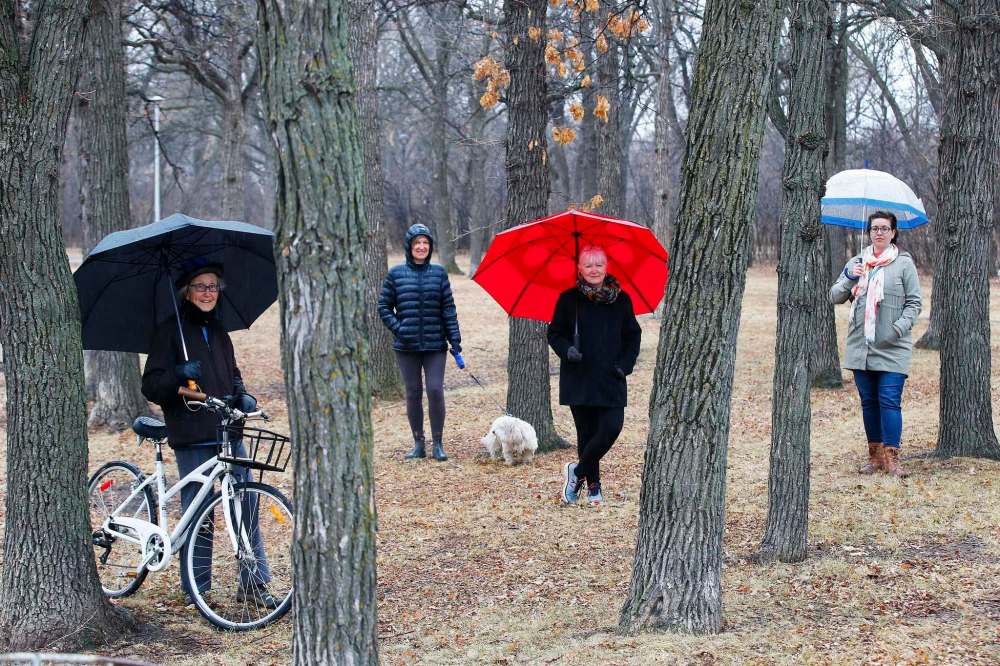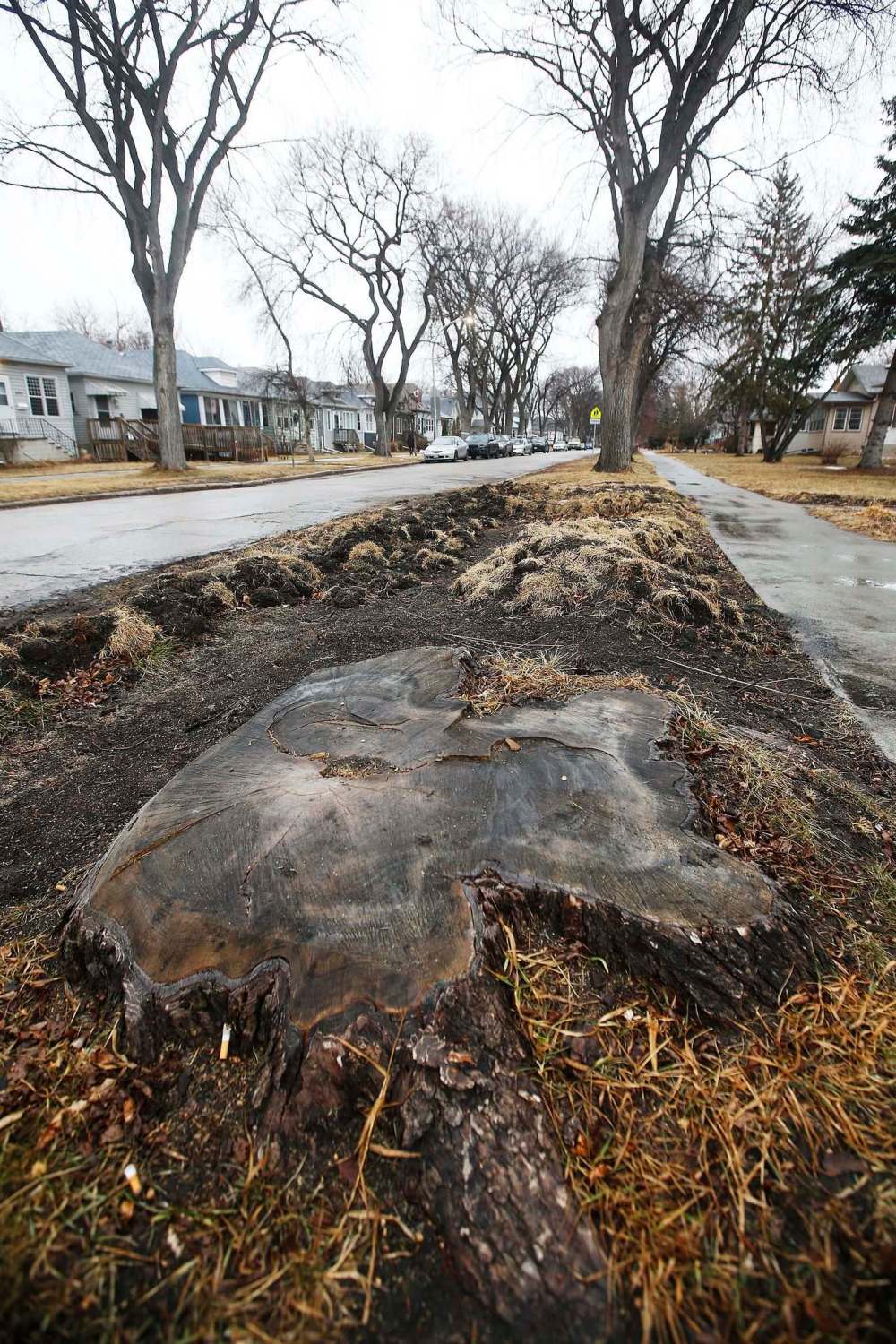Making a case for trees
Group hopes putting price on urban forests builds economic argument for preservation
Advertisement
Read this article for free:
or
Already have an account? Log in here »
To continue reading, please subscribe:
Monthly Digital Subscription
$0 for the first 4 weeks*
- Enjoy unlimited reading on winnipegfreepress.com
- Read the E-Edition, our digital replica newspaper
- Access News Break, our award-winning app
- Play interactive puzzles
*No charge for 4 weeks then price increases to the regular rate of $19.00 plus GST every four weeks. Offer available to new and qualified returning subscribers only. Cancel any time.
Monthly Digital Subscription
$4.75/week*
- Enjoy unlimited reading on winnipegfreepress.com
- Read the E-Edition, our digital replica newspaper
- Access News Break, our award-winning app
- Play interactive puzzles
*Billed as $19 plus GST every four weeks. Cancel any time.
To continue reading, please subscribe:
Add Free Press access to your Brandon Sun subscription for only an additional
$1 for the first 4 weeks*
*Your next subscription payment will increase by $1.00 and you will be charged $16.99 plus GST for four weeks. After four weeks, your payment will increase to $23.99 plus GST every four weeks.
Read unlimited articles for free today:
or
Already have an account? Log in here »
Hey there, time traveller!
This article was published 22/03/2021 (1722 days ago), so information in it may no longer be current.
Emotions are running high as Winnipeggers watch more trees get axed from their neighbourhoods and favourite parks this spring — but emotions don’t fit into municipal policy development very well.
So, a group of Winnipeggers is proposing a more actionable solution: put a price tag on the trees and then invest in them accordingly.
“People don’t necessarily think about it as anything more than this beautiful thing that was in front of their house,” said Emma Durand-Wood, a member of the Glenelm Neighbourhood Association tree committee.

But trees provide so many benefits to the community, she says, they help with drainage during heavy rain events, they provide community recreation space and in summer heat waves (that promise to become more frequent and intense with climate change) trees provide relief and can help cool homes.
“People notice right away once they’re gone,” Durand-Wood said.
Durand-Wood’s neighbour, for example, lost a tree in her front yard in the spring of 2020. The tree had shielded the woman’s house from the sun, but without that shield, her house now reaches unmanageable temperatures in the summer. This year, a new air conditioner is on the books.
“That’s a real, tangible financial impact. So I think as we start to see more and more loss, people will realize it’s not just this esthetic part of the neighbourhood. It’s really something that has a concrete benefit,” Durand-Wood said.
She is one of the founding members of the group Trees Please Winnipeg, a community tree advocacy organization. The group is asking for those very real financial benefits trees provide to be incorporated into how the City of Winnipeg and Government of Manitoba considers the urban forest.
“What happens when you see trees as assets — and assign a value to them — they suddenly start to take on importance in all levels of planning. So you don’t go ahead with an infill project without considering the trees. You don’t go ahead with a road project without considering how you’re going to incorporate and make it possible for trees to thrive on the roadway,” said Trees Please member and Green Committee chair for the Wolseley Residents Association Erna Buffie.
While it would be a new direction for Winnipeg, other cities like Saskatoon and Selkirk have begun incorporating these principles into how assets are managed. The Federation of Canadian Municipalities has released a guidebook on how to properly integrate the benefits of natural infrastructure into asset management strategies.
Additionally, Trees Please Winnipeg submitted proposals to the federal and provincial governments during public consultations ahead of new budgets being released this spring asking for stable funding to be provided for the maintenance of urban forests given all the benefits they provide. There is constant money for roadways and other built infrastructure, but not for trees and natural infrastructure, Buffie explains.
In 2014, TD Bank published a special report that demonstrated the economic benefit of urban forests and assigned dollar figure values to trees in several Canadian cities based on their different climates, geographies and city densities.
The document assigns a $54 million value to Toronto’s urban forest for its flood mitigation benefits alone. When carbon sequestration, air quality and other benefits were factored in, each Toronto tree provided approximately $7.95 in services to the city annually. And for every dollar spent on maintenance of the forest, there was an estimated return between $1.35 and $3.20.
“It’s about money, but it’s also about a change in the way people think about trees. I think we really need to reorient the way we view trees and start viewing them as something that’s a huge value, both to human and environmental health,” Buffie said.

The city has taken the first step toward this policy shift. Ahead of the 20-year strategy being released, city administrators in partnership with another tree advocacy group, Trees Winnipeg, conducted a survey of existing trees to estimate the value of their services.
The survey showed Winnipeg’s trees offer more than $3 billion of structural value, approximately $5.8 million per year in energy saving for buildings and homes, roughly $39.4 million in carbon storage services. On top of that, trees helped the city to avoid water runoff totalling 1.2 million cubic metres (or roughly the amount of 480 Olympic-sized swimming pools).
However, in recent years the city’s efforts to fight Dutch elm disease and emerald ash borer has forced a shift in funding away from regular maintenance of other trees. City statistics show that in 2014 eight per cent of the city’s trees were pruned. By 2018, that number had dropped to only four per cent of trees pruned in a year. The city document notes that best industry practices dictate that approximately 14 per cent of trees should be pruned every year.
“This is a crisis and we need the money to address this crisis properly,” Buffie said.
City administrators will release their 20-year strategy to manage Winnipeg’s urban canopy in the coming weeks.
sarah.lawrynuik@freepress.mb.ca
Twitter: @SarahLawrynuik




